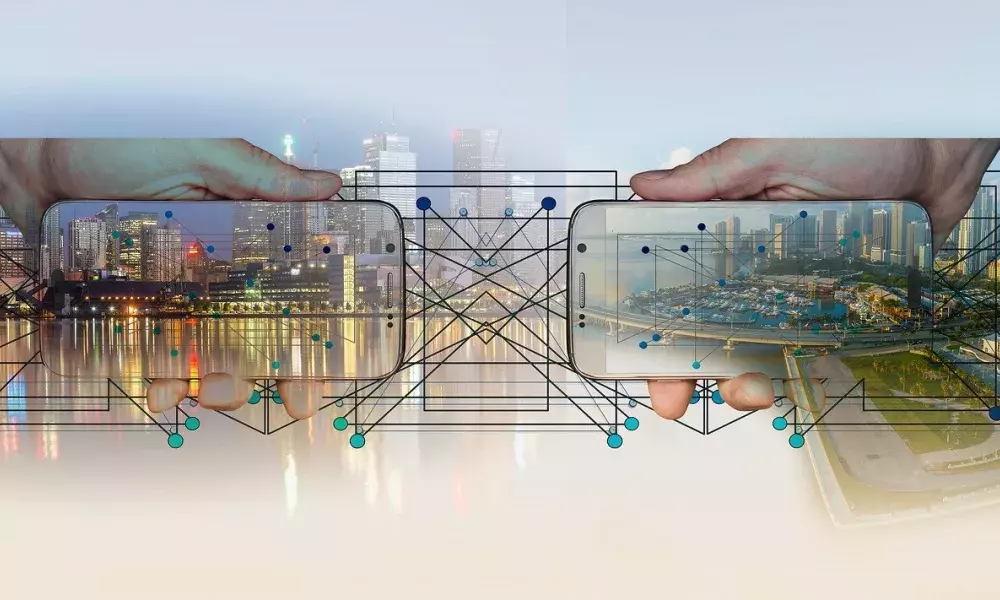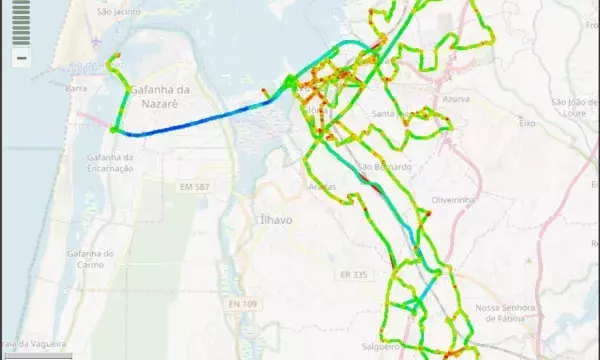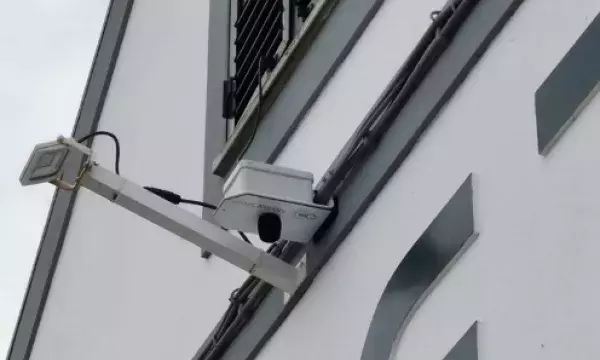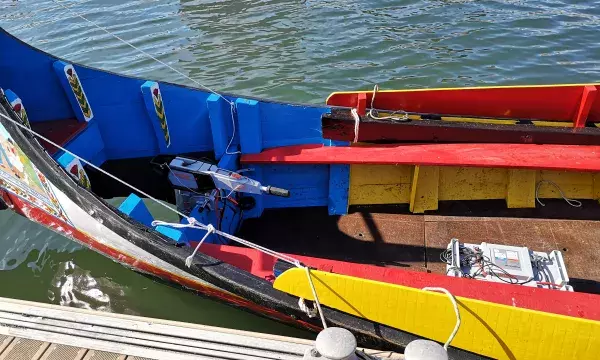IoT’S POTENTIAL: AVEIRO'S DEVELOPMENTS IN THE AREAS OF MOBILITY, ENVIRONMENT AND ENERGY

Smart cities hold some of the planet’s most awe-worthy demonstrations of the IoT’s potential; in this article, we will share Aveiro Steam City project’s experience and shed light on the smart city applications through IoT-enabled smart city use cases that span multiple areas: from contributing to a healthier environment and improving traffic and intelligent transportation systems to enhancing public safety and controlling air and noise pollution.
Read the full article to find out more on the use cases that run in the framework of Aveiro Steam City UIA project!
Aveiro Steam City ranks high in lists of IoT deployments: Aveiro’s Living Lab, thanks to the development of an advanced fibre and radio access infrastructure along with an innovative Digital Urban Platform is indeed providing a city-scale digital open laboratory, that aims at attracting researchers, digital industries, entrepreneurs and other national/international stakeholders to Aveiro, to develop and test their products or services.
The access infrastructure is based on last generation fibre link technology, reconfigurable radio units and 5G network services, in 43 strategic places covering the urban area of Aveiro. Moreover, vehicular communication and sensors equipment are installed in buses and garbage collection vehicles, which currently record mobility and environmental data, making a complete live map of these parameters in the city, and providing all the data for traffic monitoring and safe driving systems. The Digital Urban Platform allows to gather, analyse and share information collected from multiple sources (e.g. machines/sensors, databases), providing analytic and predictive services for IoT applications and city verticals.
Three use cases run on top of this advanced access infrastructure and they focus on areas of crucial importance for the city: mobility, environment and energy.
The use case of mobility aims to understand citizens’ behaviours within the city, to provide new solutions towards an efficient traffic management, intelligent transportation systems and citizens’ safety.
The use case of environment will focus on the assessment of the impact of the transport planning on the city air quality, thus providing useful information towards new environmental-friendly solutions.
The energy use case will provide new solutions regarding the use of electrical vehicles (traditional gondolas called “moliceiros”) in the water canals.
The partners most deeply involved in the deployment of use cases are:
- the Municipality of Aveiro
- the Telecommunications Institute
- the University of Aveiro
- Altice Labs.
Results from Use Cases will be disclosed to potential stakeholders (e.g. entrepreneurs, SMEs, academia) in technical workshops and public events, to catalyse innovation and the development of new skills and jobs in the region.
The Use Case on Mobility makes use of mobility sensing devices and other geolocation sensors installed on the vehicles (buses and municipality cars), bicycles and boats (“moliceiros”), as well as on the information gathered from people smartphones through their connectivity through the city. The available mobile sensing information comprises GPS location, speed and heading, temperature and sound, which enables the complete mobility map of the city.
In addition to the physical communication infrastructure, Aveiro Steam City’s team is deploying radars, LiDARs, video cameras and computing units.
Information coming from these devices is aggregated and correlated to give insights on the people’s flow, providing concrete elements for new solutions on public transportation and bike sharing systems, and to identify problems and optimize mobility in the city.
Also, this data is going to be complemented with the monitoring of ingoing and outgoing vehicles relying on recent magnetometer-based sensors easy to install and covering all accesses to the city.
Currently, there are already 10 buses and 3 garbage collectors with communication and sensing systems which send their data in real time to the Digital Urban Platform. This approach will be extended to the municipality vehicles, bicycles and boats in the city.
A set of Unmanned Aerial Vehicles (UAVs) are also considered as mobile sensing units to gather data from the city and give support to patrolling and traffic management of the city.
Finally, a smart parking system is being installed in the train station new parking area in Aveiro, with sensors communicating to special gateways, providing real-time information of available parking spaces in the area, both to the Digital Urban Platform and the citizens.
More specifically, these are examples of tests under development:
- user app to enhance the citizen experience when searching for bus lines and destinations, which provides information about the bus location and expected time of arrival;
- comprehensive statistics about driving profile (velocity, acceleration) in the city transportation system in space and time, analysing the areas and times more problematic and possible measures to improve safety;
- analysis of traffic flow in various points of the city (as well as entrances and exits), through LIDARs, RADARs and vehicles in communication;
- detection of people in dangerous situations (Vulnerable Road Users - VRUs - including crosswalks), with a real-time warning system to the vehicles approaching the crosswalk;
- measurement of social distance in a monitored area;
- determination of the level of exposure of citizens to potentially adverse environmental conditions in the city;
- accurate measurement of the radio spectrum in ten points of interest of the city;
- traffic monitoring in intelligent transport systems, and/or safety such as autonomous coordination of priority vehicles to support emergency situations;
- smart parking system with real-time information of available parking spaces.
The installation and evaluation of the overall mobility Use- Case will be concluded until the end of June 2021.

Mobile sensing Unit
“The sensing and radio infrastructure, both fixed and mobile, is able to record, in real-time, mobility and environmental data, making a complete live map of these parameters in the city, and providing all the data for traffic monitoring and safe driving systems. This, complemented with the fixed stations, provides real-time communication between the vehicles, the network, the users and all sensors around. This makes our approach for city mobility unique: not only we can get all information from all fixed and moving elements in the city to better manage the city traffic, the roads, the parking spaces, the information to the citizens and city planners, but we can also act proactively on the city to build new mobility services such as improving safety of vulnerable road users, such as people on crosswalks, bicycle and motorcycles, or providing direct lanes to priority vehicles, avoid and act in real-time to accidents (with direct contact with the hospital and doctors, and safety forces), virtual and augmented reality services in the path to self-driving and safety cities. This is only the beginning, as our living lab infrastructure is open and available for companies and institutions to build new services and applications that, at this stage, we may yet not be able to foreseen.” SUSANA SARGENTO - Full Professor University of Aveiro

Use case of driving profile statistics
The use case on environment of the Aveiro STEAM City project is focused on the assessment of the air quality and noise pollution of the city of Aveiro. This use case makes use of a number of environmental sensors capable to provide a complete environmental map of the city for the use of citizens, decision makers & researchers.
A full air quality assessment is under development and it’s going to be based on an integrated approach considering air quality modelling from urban to local scale and air quality monitoring from traditional equipment to the sensors installed (not only in fixed places, but also on the mobile units).
Different outcomes are part of this use case:
- the evaluation of the urban microclimate, air quality and noise based on modelling and monitoring;
- an environmental map of the city to be provided to citizens, decision makers and researchers;
- the impact and co-benefits of road traffic planning, including citizens’ exposure to air pollution, health effects and the costs of improvement measures;
- the contribution to the development of innovative tools to disseminate air quality alert systems to citizens and decision makers.
The first phase of the project implied the installation of the air quality monitoring system, noise and meteorological network, in the framework of the STEAM City's 5G technology and infrastructure.
The monitoring networks is composed by 9 air quality stations equipped with microsensors, 9 noise stations and 2 weather stations installed at different locations in the city. Measured data are going to be delivered, in real time, to the Digital Urban Platform developed within Aveiro Steam City.
This network also responds to the contents of the Air Quality Framework Directive, which specifies what pollutants should be measured to protect human health, namely suspended particles (PM10 and PM2.5), nitrogen dioxide (NO2), nitrogen oxides (NOx) and ground-level ozone (O3). In addition, carbon monoxide (CO) and carbon dioxide CO2 are also measured.
Currently, all stations are installed and soon the data will start to be sent to the Digital Urban Platform. Users will easily (and friendly) obtain useful information about the environmental profile of Aveiro.
In a second phase, the air quality monitoring system will be also characterized by the use of numerical air quality models, which will allow to simulate transport policies scenarios and to understand their impact on air quality and on citizens’ health and, finally, to take business intelligence driven decisions.
Both, monitoring and modelling data will be the basis for an environmental map of the city to be developed taking into consideration the guidelines of ISO 37120: 2018, in particular the environment and climate change indicator.

Air quality monitoring system – example of installed equipment
“Having access to air quality and noise data in the city we’re living is a forward step towards best citizens practices in a sustainable city. Aveiro Steam City projected and installed a monitoring network capable of delivering real time environmental data available through the Digital Urban Platform. Users will easily (and friendly) obtain useful information about the environmental profile of Aveiro.” ANA MIRANDA - Full Professor University of Aveiro
Aveiro is implementing an integrated strategy to promote electric vehicles: TRANSDEV, the entity responsible for public transport, has recently presented 3 electric buses and the Municipality has launched a public procurement for acquisition of an electric Ferry boat.
Given this context, Aveiro has around 27 private moliceiro boats, typical motor boats used in the canals, once by agriculture and salt industries, nowadays mainly for tourism purposes.
These boats make over 50 thousand trips per year, operate 8 hours/day and transport up to 35 people in a 45 minutes ride, which annually represents the transportation of over 1.1 million tourists. At the moment, the engines are either petrol or diesel, covering a shifting catalogue of power, consumption and models, realising to the atmosphere approximately 400 tonnes of CO2 every year, which represent a significant hazard to the environment.
The municipality is in charge of the infrastructure of the canals with electric charging stations and sustains the correlated costs. On the other hand, touristic companies managing the boats, that have recently received the new licences for operation until the end of 2024, have accepted to change the normal engines into electric ones, until the end of 2021.
In the absence of a ready-to-use technological solution for the new electric engines, immediately available to be procured, the municipality did internal research and created contacts with a German company, so it was possible to run a pilot propaedeutic to get all the correct info in order to write the tender dedicated to touristic companies that manage the boats.
The city is now investing into the electrical charging stations, going through a big public procurement, so that boat operators can now change their boat engines to electric ones and recharge them using the public infrastructure.
Results of the public procurement are expected by December 2020 and the installation of the electric charging stations is expected by April 2021.
The impact of this use case will be assessed on two dimensions: air pollution and energy consumption (given the transition from fossil fuel to electric consumption).
This use-case will also be integrated in the Digital Urban Platform and it will be possible to collect Data related with the energy consumption from each moliceiro, as well as the reduction of CO2 emissions due to the fact that the moliceiro boats no longer have Fuel Engines.

Moliceiro boat to be electrically powered
Use cases' added value
The three use cases presented here are very advanced demonstrators. They are to be considered as a - crucial - piece of the living lab that is being built in the city of Aveiro, where we have: an enabling infrastructure, a certain number of devices that work in the logic of the IoT, and a digital platform ready (or almost ready) to record all data transmitted, act as a business intelligence tool and run the services online. This is the big picture.
The added value that use cases bring to the project is precisely to give a concrete idea of how to develop an investment plan in assets and infrastructures for smart cities. The city, and therefore its citizens, will be able to understand on the one hand what the Aveiro Tech City initiative (of which the UIA "Aveiro Stream City" project constitutes the backbone) translates in terms of services; on the other hand, citizens will become familiar with a series of "technological products" which, in the absence of UIA funding, it would probably not have been possible to acquire, at least not in the short term. The ultimate goal of this process is to bring citizens closer to the local administration in an efficient way, through a conscious use of technology, thus also aiming at both transparency and effective communication. In fact, the data on the services collected through the sensors and IoT equipment, in compliance with the GDPR, will be made public and easily accessible to citizens through the user interface of the digital urban platform, as well as serving as a decision support tool for the Aveiro administration.
About this resource
The Urban Innovative Actions (UIA) is a European Union initiative that provided funding to urban areas across Europe to test new and unproven solutions to urban challenges. The initiative had a total ERDF budget of €372 million for 2014-2020.
Similar content




